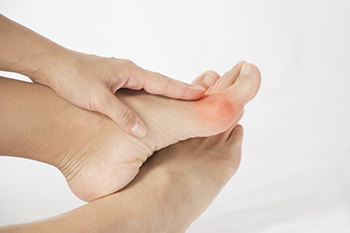

Bunions are bony protrusions that form at the base of the big toe due to prolonged stress on the metatarsophalangeal joint. Detecting them is relatively straightforward through visual inspection, often supplemented by X-rays to assess their severity. For runners, bunions can pose significant challenges, exacerbated by poorly fitting running shoes. Many running shoes, characterized by tapered toe boxes and raised heels, can contribute to bunion development over time. Treatment options range from the simple act of changing shoes and employing pain management techniques, such as medication, to using toe spacers and performing bunion massages. If conservative approaches fall short, surgical intervention may be an option, although it is not always a permanent fix. If you are a runner and have a bunion that is causing you pain, it is suggested that you make an appointment with a podiatrist to discuss pain management techniques that might help you.
If you are suffering from bunion pain, contact Dr. Stephan J. LaPointe of Georgia Foot & Ankle Specialists . Our doctor can provide the care you need to keep you pain-free and on your feet.
What Is a Bunion?
Bunions are painful bony bumps that usually develop on the inside of the foot at the joint of the big toe. As the deformity increases over time, it may become painful to walk and wear shoes. Women are more likely to exacerbate existing bunions since they often wear tight, narrow shoes that shift their toes together. Bunion pain can be relieved by wearing wider shoes with enough room for the toes.
Causes
Symptoms
In order to diagnose your bunion, your podiatrist may ask about your medical history, symptoms, and general health. Your doctor might also order an x-ray to take a closer look at your feet. Nonsurgical treatment options include orthotics, padding, icing, changes in footwear, and medication. If nonsurgical treatments don’t alleviate your bunion pain, surgery may be necessary.
If you have any questions, please feel free to contact our office located in Rome, GA . We offer the newest diagnostic and treatment technologies for all your foot care needs.